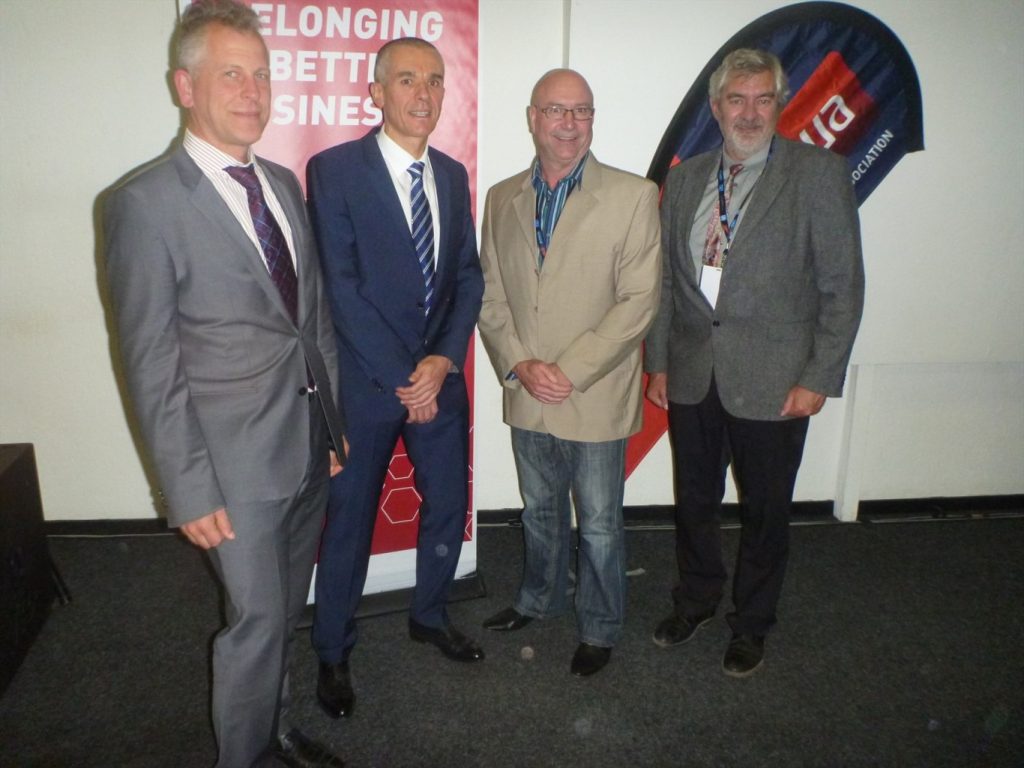Electric vehicles, autonomously-driven vehicles, Uber and shared vehicles, as well as a change in market control by the Original Equipment Manufacturers, are all upcoming events predicted to change the face of the motor industry in the next 10 years and beyond.
These were some of the topics raised at the Motor Industry Workshop Association (MIWA) conference at Automechanika on 27 September.
Jan Jooste, Director of Innovation at Sebokeng Campus – VUT Southern Gauteng Science and Technology Park, addressed delegates on the workshop of the future and shared predictions made by US company, RethinkX. “According to RethinkX, from the early 2020, a family will save US$5000 (R68 000) per year by not owning a vehicle and by 2030 new car sales will drop by 70% in the US.”
“The international move away from internal combustion engines to hybrid or electric cars will mean that, due to economies of scale, electric cars will become more affordable. The maintenance costs of electric cars are 10% of those associated with combustion engines. A combustion engine has 2000 parts compared to an electric car that has 20. This is going to impact the role of the repairer.”
He added that while the ecological argument for moving to electric cars is sound there are still very real challenges including hacking, the price and theft of copper, battery problems and so on.
He also pointed out that every new Uber vehicle replaces the new sale of 18 to 20 privately-owned vehicles in Europe. “It’s worth considering than many people walk and commute in Europe since the distances are smaller. There is more need for vehicles that travel further distances in SA so the adoption of using Uber in SA could be even greater,” says Jooste.
A more pressing issue he raised is the current situation with the coding of parts and what it means for vehicle owners who need car repairs. “Consumers can’t afford being messed around any longer and there has to be a change in who has control of the repair of your vehicle. The coding of more and more parts on the vehicle means that consumers are forced to repair their vehicles at Original Equipment Manufacturers (OEMs) or dealers. This is costly and removes their right to choose.” He referred to the Motor Industry code of conduct currently under review and strongly urged it to be reviewed on the premise of what is best for the consumer.
Gunther Schmitz, Vice Chairman of Right to Repair SA (R2RSA), then took to the stage to address the code and progress made by R2RSA on this issue. “The Right to Repair campaign is about fair competition which we believe leads to broad-based economic growth, a more competitive industry and better offerings for the consumer. What this means is that parts prices will decrease. Studies in the EU and US, where the Right to Repair has been implemented, show that the price for non-captive parts are 6-10% lower. Another benefit for consumers is improved quality of services. Currently authorised repairers are perceived as having a premium status within the repair sector, despite the fact that surveys generally tend to show little difference with regards to the quality of the services provided. We expect a small shift from dealers to independent aftermarket for repairs on newer vehicles but a higher customer retention rate of dealerships due to improved service. In the end, those offering the best service will benefit,” he says.
Regarding the code, Schmitz says generally R2RSA is satisfied with the points of the code but is awaiting responses from the industry especially the OEMs. “It is a voluntary code at this point. Those who comply to the code will have a year to implement it. While we hear the concerns regarding the voluntary nature of the code we believe the reason it is voluntary at this point is to hasten the process of implementation. A mandatory code would need to follow a legislative process which will be lengthier. However, it is worth mentioning that a voluntary code was implemented in Australia and after lengthy negotiations only one OEM complied. We are hoping SA does not have to go down this road too,” he says.
Pieter Niemand, Director of MIWA, says, “There’s no doubt that we are going to see major advancements and changes in the motor industry in the not too distant future and independent repair workshops need to be aware and ready for these changes.” To encourage delegates to keep focussed and to persevere though the challenges ahead, Joey Evans, was the key note speaker and shared his inspiring story.
Evans was the only South African on a bike to complete the 2017 Dakar Rally – a gruelling 13-day challenge across South America. What makes this achievement even more profound is that 10 years earlier, Evans broke his back in a motorbike accident and was left paralysed from the waist up. “I was given a 10% chance of ever walking again following an operation to fuse my back,” he explained. During the 10 years following that he learnt to walk again, ride a bike again, had two more nearly-fatal bike accidents, and managed to qualify for the Dakar and raise R1.1m to enter thanks to the help and support of his wife and four daughters.
“My philosophy is this: You didn’t come this far, to only come this far,” he says. “I am a small business owner so I understand the stresses and responsibilities that come with that. It’s the business owners that go through the night and never give up that make it.”
Delegates got to see first-hand the bike that Evans rode in the Dakar and speak to him about his story.
